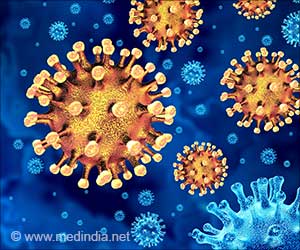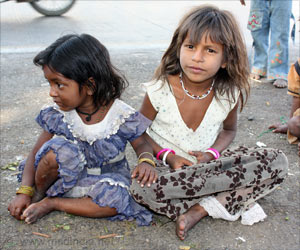India reported 756 cases of Polio in 2007. The northeastern state of Bihar sees sevenfold increase.
Whatever the claims of medical advances, polio continues to haunt India
It reported 756 cases last year as against 676 in 2006, the rise indicating the fight against the disease is flagging.But the worst performer was Bihar, a backward northeastern state. It saw an appalling sevenfold increase, from just 61 in 2006 to 396 last year.The other backward northern state Uttar Pradesh moved up the health index by launching a spirited immunization drive.
Uttar Pradesh, India's most populous state reported 315 cases last year as against 548 cases in 2006."Uttar Pradesh has done really well in 2007 but the increase in the number of cases in Bihar is a worrying trend. However, let me clarify that the most virulent strain of polio (P1) has been controlled in a major way," said a central health ministry official.
"While 648 P1 cases were detected in 2006, in 2007 it went down to just 76. The rest are P3 strains. All the 61 cases that Bihar reported in 2006 were the P1 virus but the number has gone down to 39 in 2007."
"However, we feel, a weak immunisation drive, lack of proper transportation facilities to many areas, and proximity to Uttar Pradesh are the main reasons behind the increased incidence in Bihar."
"It's certainly a major worry and we are going to focus on Bihar in 2008 without feeling complacent about Uttar Pradesh," the official told news agency IANS.The health ministry along with World Health Organisation (WHO) has drawn up a programme strategy for Bihar.
Advertisement
"More surveillance, more manpower and a regular immunisation drive will be carried out in Bihar. The first round (of the year) was carried out in the second week of January. We are going to carry out drives against both the P1 and P3 strains," a WHO official said.
Advertisement
Technical support from the non-high risk areas of Bihar will then be deployed to support the activity in the high-risk blocks, the WHO official explained.
India is the number one polio endemic country in the world.
The global health watchdog, however, said that the spurt in the number of P3 cases should not be a cause for worry. “There are a significant number of new P3 cases being reported from Bihar, this is not unexpected. The impact of the two large-scale Supplementary Immunisation Activities in late 2007 will not be apparent until later in 2008."
"The experience with the immunisation drive against the P3 virus in western Uttar Pradesh demonstrates that the rapid implementation of large-scale campaigns has a significant impact in curbing P3 transmission," the official said.
Both health ministry and WHO officials said that with so many rounds of immunisation across the country, Indian children had developed a strong immune system. "With support from the WHO and the world community, we are doing a lot of hard work across the country in general and Uttar Pradesh and Bihar in particular. We are quite hopeful of a much better situation in the near future," the health ministry official assured.
The authorities said in India, only 11 cases of the P1 strain were reported in the last three months of 2007, despite this being the high season for polio transmission. This is the lowest-ever reported incidence of P1 in India in a year's final quarter.
The union health ministry and WHO carry out polio surveillance and data collection in India jointly.
Source-Medindia
GPL/K







